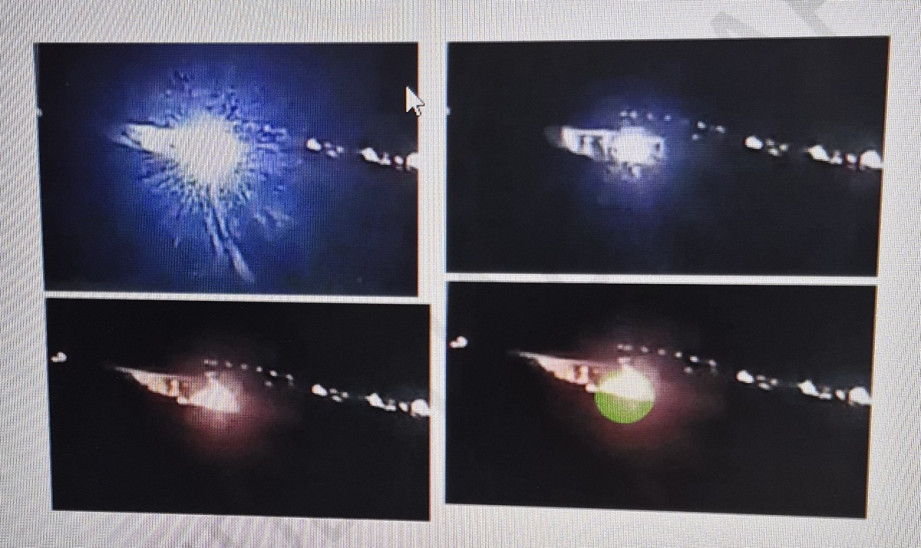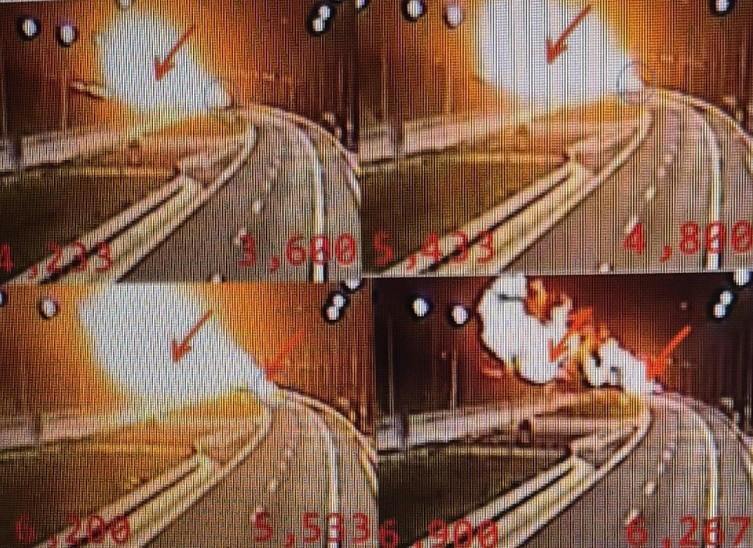How Ghent University interprets huge flames after conflict – the reconstruction of the sequence of events as described in the draft
In the draft of the finding resulting from the exploration of the railway accident of the Temps under National Air and Railway and Transport Security Investigation Organization (EPAAAM) and which came to the knowledge of ‘Everyday“, Outline the incidents that preceded the collision of the two trains, the mechanism of the collision itself, as well as the causes of the subsequent ignitions.
According to the draft, there is no data to support the existence of tens of tens of tones or the existence of a hidden wagon on the commercial train, but it seems that by completion of the final finding the estimate of quantity will be substantiated. 3.5-4 tonnes, probably aromatic hydrocarbonsin the third wagon of the commercial, which was ignored after the conflict.
The small leakage of silicone oils contained in the transformers in the first two wagons of the trade train is not sufficient, reportedly, to challenge the explosion that occurred. This is also reinforced by the fact that transformers have suffered only a few cracks.
The reconstruction of the sequence of events is based on the well -known trains movement data (direction, speed, mass, analysis of the type of wagon damage after the accident), while the explosions were mainly used by cameras material, which is still judged. capable of leading to scientifically safe conclusions about the type of cargo of the trading train moving on a descent line.
According to the finding, none of the research centers involved – the universities of Pisa and Ghent or the Swedish Institute – have permanently ruled on the type of cargo that led to the explosion. However, all three have documented the most appropriate methodology, from which safe conclusions can be drawn, provided that is taken into account correct parameters (humidity, wind speed, temperature, etc.).
This is the method of computational fluid dynamics (CFD), which analyzes the flame and ends with the kind and extent of the flammable material that has caused it. In particular, the University of Pisa has positively opted for the suitability of using the method of analyzing the explosion in the Tempe accident. The University of Ghent has currently validated the definition of the right parameters (eg humidity) to carry out the control using CFD methodology. Especially for silicone oils, Ghent researchers rushed to remove them early from the frame of responsibility, just thanks to the CFD.
While the finding is to be presented as a whole at the end of February, the method of explosions highlighted by the authors of the finding as the most appropriate, has not yet produced definitive results, and is currently running, as time is required to analyze all of data.
Firefighting
From Intercity 62, fully damaged by the fire is the back of the restaurant’s wagon and the B2 passenger wagon. Only six fractions of a second after the train collisions are observed the first electric arc that creates a short circuit and bright glow, while the other two flashes follow. The explosion begins about three fractions of a second later on the ground and possibly due to the brake sparks, according to the finding. The explosion extends upwards, forming a fire of about 42 meters in diameter that burns for about 2 seconds, signaling the first phase of the fire.
In the second phase, a few seconds after the initial ignition there is a new fire in an “indefinable volume or area” away from the original fire. However, the original fire is powered, which doubles in size before it is erased seconds after ignition, according to the finding. The duration of this second phase and the height of the fiery columns indicate that a significant amount of fuel is involved, based on what is mentioned.
All three research centers involved – the universities of Pisa and Ghent and the Swedish Institute – have come up with the appropriate methodology for an explosion analysis.
In the third phase, two separate fires continue to burn at the level of the ground, one near the engines of the trading train, which is likely to heat silicone oils. There is a fireplace that erases on its own before consuming all the amount of oil on the transformer. Another fire burns in the remnants of the restaurant’s wagon with a strong flame and a total duration of 2 hours. These two fires seem to consume any residual fuel that has not been consumed by the initial fire. The first firefighting attempt was carried out 43 minutes after the start of the fire by a single fire truck, managing to affect it little.
The fire in the B2 of the passenger B2 started from the bottom at 23.35 and then burned the full length of “without any active fire fighting until it starts burning with very intense flames, powered by large seats, curtains and interior Materials, “according to the finding. By 00.40 the fire had burned the entire B2 wagon and had begun to extinguish on its own, as there was no other fuel material.
It is shortly after 2 in the morning when the fire in the restaurant’s wagon seems to be calm, as aerial photography from the scene of the accident shows tobacco coming out of the restaurant’s wagon and two other small fireplaces remaining in the front and rear of the wagon. An attempt to extinguish it at 02.32 shows foam pumped to the wagon, without being clear if it played a role in the actual extinguishing of the fire that had already devoured the total length of the wagon, the finding said.
Three phases
The analysis of the visual material at the time of the collision also demonstrates the sequence of three consecutive but distinct phases (1st conflict, 2nd collision, deceleration) from the time of the first frontal collision until each vehicle is immobilized in its final position.
The first phase mainly concerns the first four wagons of the two train: the two of the commercial where the engines were located and the first two of the passenger where the engine and the first place of the passengers were. The initial impact is frontal and results in the wagons ejected to one side and crashing on the wall of the motorway. The first place wagon was completely destroyed, with seats scattered in the wider area of the accident. As the first four wagons of the two train are disconnected from their trains, the rest of the wagons are moving more slowly due to the impact and brake activation. The finding shows that the manual emergency brake is activated 1 second before the first, frontal, collision and how mechanical brakes are automatically activated on the passenger train due to loss of pressure from the 1st impact.
The second collision of the rest of the wagon, the restaurant of the passenger train, which is the third wagon, and the commercial wagon carrying steel plates, is frontal. This is the conflict that causes serious damage to the restaurant wagon that takes the form of a “final sigma”. In the third phase of the conflict, wagons continue to collide with a slightly smaller momentum, according to the finding.
Source: Skai
I have worked as a journalist for over 10 years, and my work has been featured on many different news websites. I am also an author, and my work has been published in several books. I specialize in opinion writing, and I often write about current events and controversial topics. I am a very well-rounded writer, and I have a lot of experience in different areas of journalism. I am a very hard worker, and I am always willing to put in the extra effort to get the job done.













